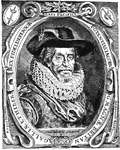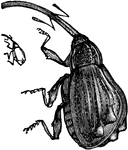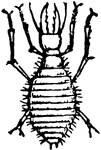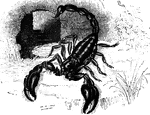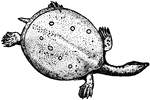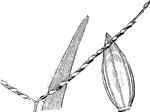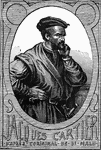
Jacques Cartier
Jacques Cartier, voyager of St. Malo, coasted along the north of Newfoundland in 1534 and passed through…

Anomalops Palpebratus
"A genus of fishes, typical of the family Anomalopidæ: so called from the remarkable structure…

Ants and Their Structures
"This tribe, which includes the various kinds of Ants, is composed entirely of insects which live in…

Death's Head Moth
"The most remarkable species is the Death's Head Moth, Acherontia Atropos, a large kind,…

Flea
"Aphaniptera includes the fleas, which, despite their minuteness, have made themselves a name in the…

Antlion and Larva
"In some species the larvae, which are small, sluggish, oval-shaped creatures, and furnished with a…
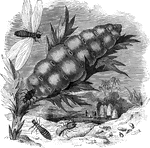
White Ants
"These animals, often called White Ants, live in vast communities, principally in the hotter…

Earwigs
"The Foficulina includes the Earwig, Forficula, which appears to live principally upon vegetable…
!["Like that animal [the mole] it is constantly engaged in burrowing in the earth; and to enable it to do this with facility iits anterior limbs are converted into a pair of flat, fossorial organs, which are turned outward in exactly the same manner as the hand of the mole. In its pasage through the earth it does great injury to the roots of plants, but it said to live quite as much upon animal as vegetable food." — Goodrich, 1859](https://etc.usf.edu/clipart/14900/14935/molecricket_14935_mth.gif)
Mole Cricket
"Like that animal [the mole] it is constantly engaged in burrowing in the earth; and to enable it to…

Drone Bee
"Bee is the common name given to a large family of hymenopterous or membranous-winged insects, of which…

Boat Fly
"They carry the air required for their respiration in a space left for this purpose between the wings…
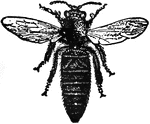
Queen Bee
"Bee is the common name given to a large family of hymenopterous or membranous-winged insects, of which…

Worker Bee
"Bee is the common name given to a large family of hymenopterous or membranous-winged insects, of which…

Royal Cells
"Bee is the common name given to a large family of hymenopterous or membranous-winged insects, of which…
Filipino Bolo
"A Bolo is a short, broad, lance-shaped weapon; used by the Filiinos in their operations against the…

Filipino Bolo Sheath
"A Bolo is a short, broad, lance-shaped weapon; used by the Filiinos in their operations against the…
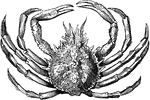
Spinous spider-crab
"In these the back is usually covered with spines and hairs. They generally live in deep water, and…

King crab
"It is among the largest of crustaceous animals, sometimes measuring as much as two feet in length.…
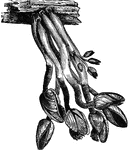
Barnacles
"The Common Barnacle, Lepas anatifera, perhaps the best-known example of the order, generally…
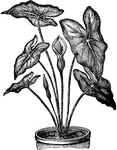
Caladium
"Caladium is a genus of endogenous plants, the typical one of the family caladieæ. They are cultivated…

Common sea-cucumber
"Sea-Cucumbers are of various forms, some of the species being found in nearly all seas. They…
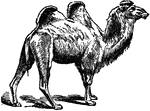
Camel
"Camel is a genus of ruminant quadrupeds, characterized by the absence of horns; a fissure in the upper…
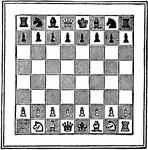
Chess Board
"Chess is the most purely intellectual of all games of skill, the origin of which has been much disputed,…

Chicory
Chicory is a flowering plant with blue flowers, originally from the Old World but now seen growing wild…

Library of Columbia University
"Columbia University is a seat of learning in New York city. The charter of King's College, the original…
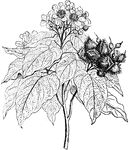
Arnotto
"Arnotto-extremely common in Jamaica and other parts of the West Indies, and has been introduced into…

Arrastre
"Mexican Arrastre. A rude apparatus used in Mexico, and to some extent in the United States, for grinding…

Cemmeous Dragonet
"Dragonet is a genus of fishes remarkable for having the gill openings reduced to a small hole on each…
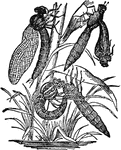
Dragonfly
"The Dragon Fly has a large, broad head, very freely attached to the thorax, and large, convex, prominent…

Dugong
"The Dugong is an herbivorous mammal, belonging to the Manatees. It ranges from 10 to 20 feet in length.…

Erne
"The Erne is one of the 'bare-legged' eagles. The genus includes some seven species, represented apparently…

Tiger Head
"Felidæ or Felinæ is the cat tribe, a family of carnivorous quadrupeds, including the domestic…
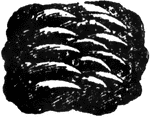
Partial Tiger Tongue
"Felidæ or Felinæ is the cat tribe, a family of carnivorous quadrupeds, including the domestic…

Tiger Paw
"Felidæ or Felinæ is the cat tribe, a family of carnivorous quadrupeds, including the domestic…

Maxim’s Flying Machine
"A Flying Machine is a device for enabling man to navigate the air. The feat of flying has been often…

Side View of Bones in Foot
"The Foot is that part of the lower extremity below the leg on which we stand and walk. It is composed…

Side View of Bones in Foot
"The Foot is that part of the lower extremity below the leg on which we stand and walk. It is composed…

Goosander
"The Goosander is a web-footed bird in the duck family. The adult male, which measures 26 inches in…

Goosander
"The Goosander is a web-footed bird in the duck family. The adult male, which measures 26 inches in…
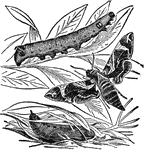
Hawk Moth
"Hawk Moth is a family of the lepidopterous insects, forming along with the clear winged moths and the…

Hedgehog
"Hedgehog is a quadruped distinguished by having the body covered with spines instead of hair. The skin…

Song Thrush
"Thrush, in ornithology, is the name for any of the Turdidæ. They are universally distributed,…
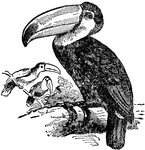
Toucan
"The Toucan, in ornithology, is the popular name of any bird of the genus Rhamphastos. They are all…

Trichina Spiralis
"Trichina Spiralis is the name given to a peculiar nematoid worm which inhabits the muscles, usually…

Trichina Spiralis
"Trichina Spiralis is the name given to a peculiar nematoid worm which inhabits the muscles, usually…

Turnstone
"Turnstone is a small genus of birds of the plover family, intermediate between the true plovers and…
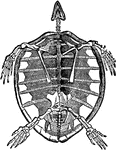
Skeleton of Turtle
"Turtle is, in zoology, the popular name for any species of the Cheloniidæ. They may be distinguished…
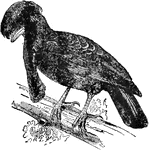
Umbrellabird
"The Umbrella Bird is a native of Peru. It is about the size of a crow, with deep black plumage; the…

Viper's Bugloss
"Viper's Bugloss is a genus of plants. The species are large herbaceous plants or shrubs, rough with…
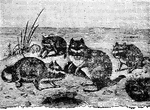
Viscacha
"Viscacha is a stout-built rodent, resembling a marmot, from 18 inches to two feet long, exclusive of…
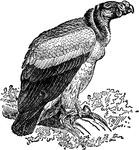
King Vulture
"A Vulture is any member of the family Vulturidæ included among the birds of prey. In all the…
